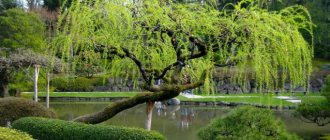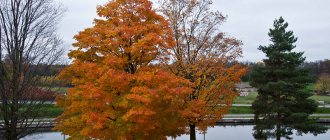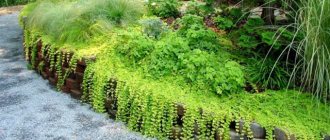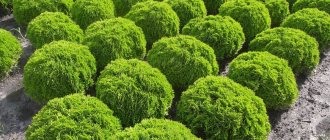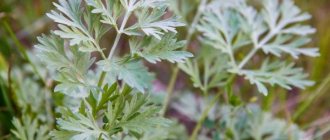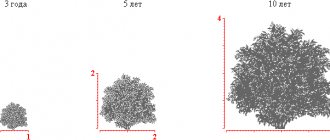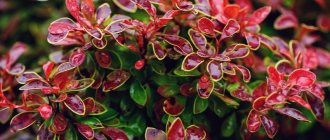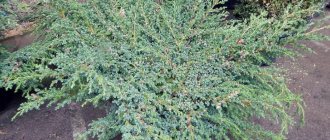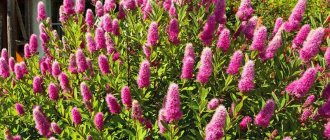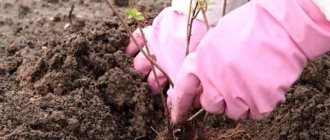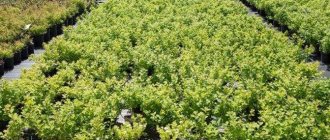If you want to decorate your site with a beautiful deciduous tree, but don’t know where to choose, then be sure to take a closer look at maple. This amazingly beautiful tree is sung in many poems and songs. Maple will help you create the best shady place on your property in the summer heat that you can have. And in the fall, you simply cannot take your eyes off the bright colors of the leaves. This tree has many species, each with its characteristic fall leaf color. Thus, the aesthetic value of maple in a garden plot is simply impossible to describe. The word “maple” translated from Latin means “sharp.” This is probably due to the shape of the maple leaves. They can be either five-fingered or three-, seven- or nine-fingered. The seeds of this tree are enclosed in beautiful lionfish, which are easily carried by the wind. The most pleasant thing is that maple can easily be grown independently, even by a beginner in this matter. In this article we will look at all the subtleties and secrets of growing this delightful tree, and also describe the mandatory steps for caring for maple.
Variety of maple varieties
Japanese maple
The Japanese maple owes its name, as you already understood, to its indigenous place of growth. It is in Japanese gardens that you can enjoy all the splendor of this tree, see the full richness of the colors and shades of its crown. Japanese maple is very heat-loving and therefore not suitable for cultivation in all regions. In Russia, this tree is listed in the Red Book. Very often it is used as a decorative container tree to decorate gazebos, entrances to buildings, etc. In addition to its excellent and ideally shaped crown, the Japanese maple is known for the beautiful color of its leaves in the fall - burgundy, purple, pink, etc.
American maple
This type of maple is quite widespread and, largely because of this, is not particularly popular or loved. It is considered more of a weed than an ornamental tree. This weed, moreover, is very difficult to eradicate from the site. The American maple variety Flamingo is of much greater value. The tree has white and pink leaves, for which it received such a symbolic name. If branches with pure white or pure pink leaves appear on the tree, then they need to be removed, because... the variety may completely degenerate. Inexperienced gardeners will appreciate the fact that the tree does not require complicated pruning. It grows quite compact and with a beautiful crown shape.
Manchurian maple
If you have a fairly open and well-lit area on your site, then the Manchurian maple may well settle in your place. This species is very popular among gardeners. Its beautiful soft green leaves on red petioles turn purple in autumn. Maple does not require pruning, has a naturally beautiful, openwork crown and can reach a height of 20 meters. The root system is shallow, and therefore the plant tolerates transplantation well. Moisture-loving.
Greenbark maple
Greenbark maple is an excellent option for garden decoration. It has enormous decorative value due to its unusual colored bark. The green trunk with light veins looks very fresh and exotic for our gardens. In autumn, the crown of the tree turns a rich yellow color.
Red maple
Red maple can become the real heart of your garden. In the autumn, a very spectacular sight awaits you. The bright red, burgundy or pinkish crown compares favorably with other autumn colors of trees. Red maple feels great in marshy soils and therefore received a second name - swamp.
Ginnala Maple
The unpretentious Ginnala maple is also loved by many gardeners. It can be grown as a tree or shrub. Maple leaves turn orange-red in autumn. Such a hedge made of bushes will look simply gorgeous in the fall. In harsh winters, the tender branches of the Ginnal maple can freeze, but in the spring they quickly recover.
Norway maple
This type of maple received this name because of the holly shape of the leaves. Depending on the variety, maple leaves can have a purple color, green with a white edge, etc. Breeders have taken care to create a huge number of beautiful varieties of this maple. For example:
- Krimsong King
- Drummondii
- Faassen's Blasc et al.
Norway maple loves well-lit areas. It has a straight trunk and a lush, dense crown. Some forms of maple have a spectacular spherical crown shape. The beauty is that the crown grows in this shape naturally. You don't even need to trim the branches.
Varieties of maple with variegated foliage
Growing no more than three meters in height, field maple Carnival
will add lightness and sophistication to your garden landscape. Delicate greenish leaves have an unusual milky cream edging. Even sometimes the light color dominates and from a distance it seems as if the tree has a white crown. When the wind sways the leaves, greenish shades appear a little more and the landscape comes to life before our eyes. Low and slow-growing, this maple will add zest to any landscape composition.
Norway maple Drummondii
It can grow up to 12 meters in height and has a dense, wide-pyramidal crown. Like Carnival, this variety is notable for its incredibly beautiful variegated foliage. An uneven whitish stripe borders the light green large leaves of the Drummondi maple. Its young leaves have a delicate pinkish color. This maple will be a worthy backdrop for plants with dark green or red foliage. It has good winter hardiness, but is very sensitive to soil drying out.
The Flamingo ash maple
is attractive not only for its unusual leaf color, but also for its shape.
. Growing up to five meters, it will look great both in a single planting and in a mixed composition. It was not by chance that this maple was called ash-leaved, because the shape of some leaves is, indeed, like that of an ash tree. However, for the most part, the foliage is five or seven-lobed, no more than 20 centimeters in length, and white-green in color. Young leaves have a pleasant pinkish tint, which is why this variety got the name Flamingo. This maple is considered fast-growing, giving growth of up to 50 centimeters per year. Winter hardiness is good.
How to plant maple on your own plot
Stage 1. Choose a place to plant the maple and prepare it
If you want to grow a truly shady, beautiful and slender tree, then carefully choose where to plant it. After all, a lot depends on the climate and soil. Since maple is a fairly heat-loving and light-loving tree, the area should be sunny. But keep in mind that in the first years of a young tree’s life you will have to shade it from the scorching rays of the sun. If you have chosen a suitable place for maple on your site, then you can start preparing the planting hole:
- You need to start preparing the hole 2-3 weeks before planting the tree so that the ground is properly settled.
- To fill the hole, the most ordinary soil with an admixture of humus is suitable.
- Dig a hole of suitable size - 70 cm deep and 50 cm wide.
- If you plant single trees, then the distance between them should be 2-4 meters, and if you want to make a hedge of maples, then 1.5-2 meters.
- Peat or humus, sand, and mineral fertilizers are added to the excavated soil.
It should be noted that maples may require different options for filling the planting hole and different amounts of fertilizer depending on the type or variety.
Stage 2. How to choose the right seedling
The choice of maple seedling directly affects the quality of the future tree. Of course, there is a huge temptation to buy seedlings on the market at an inexpensive price. But in this case, don’t be surprised if you buy a “pig in a poke.” It is better to purchase a tree for your garden in specialized nurseries, and then you can be absolutely sure of its quality. Very often, gardeners are lost in choosing what size seedling to purchase. Some people mistakenly believe that three- or four-year-old trees will take root much faster and quickly turn into slender mature trees. But it is not so. The fact is that very small “twig” seedlings can have a much stronger root system than older specimens. In many nurseries, seedlings are dug up for sale not by hand, but with the help of a plow or other equipment. The roots of large seedlings can suffer much more than those of young ones. When purchasing a seedling, consider the following rules:
- the best time to buy a maple seedling will be the end of September or October;
- the leaves on the seedling should not be withered;
- the roots should not have visible damage or defects.
Stage 3. Maple planting technique
The seedling must be immersed in the planting hole so that the root collar is flush with the ground surface. After planting and watering, the soil will naturally settle by about 20 cm. Therefore, take this distance into account when planting. Most maple varieties do not tolerate waterlogged or swampy soils. If in your area the groundwater flows very close to the surface, then it is necessary to make drainage at the bottom of the pit from crushed stone.
Stage 4. Caring for the planted seedling at the very first time
A newly planted maple requires care. Since it has not yet taken root and taken root well, it needs to be shaded from the scorching rays of the sun. The tree also needs abundant watering; in hot weather, water once a week. The water should thoroughly saturate the soil to a depth of at least half a meter.
Maple varieties on a trunk
Regular rounded shrub shape of Norway maple Globosum
and good frost resistance allow this variety to be grafted onto a standard, creating an incredibly attractive specimen for planting in a landscape composition, alone against a lawn or in an alley planting. One of the few varieties that categorically does not tolerate stagnant moisture, and therefore it is recommended to choose sunny places for planting away from the lowlands. The diameter of the shrub itself can reach six meters, and therefore, with age, the thickening trunk will one day support a huge dense crown of numerous shoots, strewn with the classic five-lobed leaves of maple. Lush green in the summer months, they turn a pleasant shade of orange by autumn.
Norway maple Golden Globe
, like the previous representative of this species, is ideal for grafting onto a standard and looks incredibly decorative both in mixed landscape compositions and when planted along alleys. Growing up to six meters in diameter, it is also capable of forming a luxurious, dense crown of a regular spherical shape. The peculiarity of this maple is the bright and unusual color of the foliage: orange-yellow in the spring, it turns light green in the summer. And if the maple grows in a well-lit place, its crown will shimmer with golden-yellow hues in the summer months.
Does maple need care?
Some inexperienced gardeners mistakenly believe that deciduous trees, like maple, do not need care at all, and the tree grows well on its own. But, if you planted a maple on your site specifically for decorative purposes, then you cannot do without maintenance. It is worth noting that you do not need to perform any complex actions. The mandatory minimum care for maple on the site should include the following:
- regular watering. Watering is one of the most important conditions for colorful leaves in the autumn. In spring and autumn, one watering per month is enough, but abundant - 15-20 liters of water per tree. In summer you can water every week. And for very young maples, a double portion of water will not hurt;
- loosening the soil after watering;
- weed removal;
- feeding once a year. If you have prepared the planting hole correctly, then you do not need to fertilize the young tree this year. Next year, after hibernation, the tree needs to be helped to prepare for the spring-summer period. You can add superphosphate, potassium salts, urea;
- pruning Some varieties of maples do not require any pruning, because... grow on their own with a beautifully formed crown in a natural way. But it never hurts to remove damaged, frozen branches after winter.
Suitable neighbors for maple trees in the garden
Maple is a brightly colored tree, so it is best placed with green trees such as spruce.
Maple will look beautiful with many plants, but the combination with oak, birch, evergreen conifers, and common elm will be especially striking. The trees not only visually match each other, but also put forward approximately the same requirements for the composition of the soil. Dwarf maple varieties are simply ideal for arranging rocky and Japanese gardens.
We also need to decide what kind of neighbors our maple tree will have. The combination of maple in groups with common elm, birch, oak, small-leaved linden, as well as with dark coniferous trees: fir, spruce, larches is very beautiful. These trees are good, in this case, because they tolerate soils that are similar in composition.
Low forms of maple will look great and magnificent in rocky gardens. A good solution would be low-growing maples in rockeries, next to bergenia, between decorative stones.
The most dangerous pests and diseases of maple
Maple, like all plants, can be attacked by pests or infected with diseases. They must be identified in time in order to successfully combat them. Without taking any measures, the maple will simply lose all its decorative properties and cease to please the eye. Among the most common maple diseases that affect not only the leaves, but also the trunk of the tree, the following can be distinguished:
- Powdery mildew. This disease is easily recognizable. In spring, a white coating appears on the leaves. Dry and hot weather only contributes to further infection of the tree. The spores become airborne and can infect nearby trees. Damaged leaves appear covered with white frost.
- White spotting. This fungal disease can also become very dangerous for maple trees. White spots with small black spots in the middle - pycnidia - begin to appear on the upper side of the leaf.
- Brown spot. This disease is also fungal. Small brown spots can be seen on the leaves. Norway maple is often affected by this disease.
- Yellowish spotting. This disease can be identified by the presence of red-brown spots on the leaves up to 1 cm in diameter with a dark edge. In the middle of this spot there are small black dots - pycnidia.
- Pinkish spotting. Absolutely all types of maple can be affected by this disease. It appears as pinkish spots with a fuzzy brown edge. On the underside of the leaf you can find the same black pycnidia.
- Black spot. The fungus that causes this disease affects the leaves of different types of maple. First, yellowish spots appear on the leaves, then they are covered with a dense black formation - stroma. The leaves become shiny and convex.
- Deformation. This fungal disease also has characteristic symptoms: dark, almost black spots that eventually merge and cover the entire leaf. The leaf plate becomes wrinkled, deformed, the leaf dries and falls off.
- Black. This disease is characterized by the appearance of black mycelium on the leaves, which eventually affects the entire leaf.
- Viral mosaic. This disease is transmitted through sucking insects. The leaves become uneven in color, with light and dark spots. Gradually they become wrinkled and deformed.
- Wilt. This disease is very dangerous because... can easily destroy the entire tree. You can suspect such a disease in maple by the presence of greenish veins on the trunk. With further progression of the disease, the bark completely changes color to olive, greenish. Both branches and roots may begin to dry out. The tree may simply not bloom in the spring or suddenly dry up in the middle of summer.
Pests are also very dangerous for maples. They can slowly and sometimes imperceptibly infect a tree, oppressing it and feeding on its sap. In addition, some pests can also be carriers of diseases. The most common are:
- maple shooter;
- ash spandex;
- apple scale;
- gypsy moth;
- maple sawfly;
- sycamore moth;
- American white butterfly;
- mice, hares, etc.
Growing maple from seeds: myth or reality?
Growing maple from seeds is a completely feasible idea. However, only some types of maple are suitable for this: Ginnala, Tatarian, Holly, Greenbark. There is no need to rack your brains about where to get good seed material, because... it can be found right under the maple tree. The maple fruits are lionfish - two interconnected wings with a seed inside. During leaf fall, in autumn, you just need to look for them among the fallen leaves. These lionfish will be your planting material. When growing maple from seeds, it will be useful for you to know:
- Maple seeds can be planted in spring and autumn.
- When planting in spring, seeds must be stratified for 3 months - simulating the natural winter period in artificially created conditions. To do this, place the lionfish in a container with damp sand and put it in the refrigerator. So, they can be safely stored for up to 2 years.
- Plant seeds after stratification in open ground around April or May.
- For better seed germination, you can soak them in hydrogen peroxide for 1-3 days.
- The first shoots of maple seeds appear after 15 days.
- You can plant maple seeds in the fall. You need to have time to do this closer to the appearance of snow cover.
- The planting pit for growing maple from seeds is prepared in the same way as for growing seedlings. The lionfish are immersed in the ground to a depth of 4 cm with their wings up.
- By autumn, a maple planted with seeds will reach 20-40 cm in height, and the next year - 80 cm.
Using maple in landscape design. Photo
Maple is quite often used in landscape design. This tree is amazingly beautiful and resilient. You can meet these beauties in almost any city park. The undoubted advantage of using maple to decorate a site is its shade, stateliness and ideal crown shape, as well as the abundance of colors in the fall, which are pleasing to the eye. Despite all these advantages, some gardeners may caution you against growing maple on your property. This is due to the maple’s ability to self-reproduce and quickly grow new trees. Thus, the maple is able to fill the entire nearby space. If your dream of having a maple tree in your yard is so strong, then choose a remote, spacious area where you no longer plan to make any plantings in the form of flower beds, vegetable gardens, etc. In the photo you can see and feel all the beauty of this deciduous tree.
As you can see, to make an ideal shady place in your garden to relax in the hot heat, you don’t need much. Like any plant, the maple needs your care and affection, and it will definitely reciprocate your feelings. Don't be afraid to take on the challenge of growing this beautiful tree. Good luck!
American maple: an aggressive woody weed or an ornamental find
Ash-leaf maple or American maple (Acer negundo) is a deciduous tree of the maple family, native to North America. In the first half of the 20th century, it became one of the most common alien tree species in Russia.
Currently, the “newcomer” is included by experts in the “Black Book of the Flora of Central Russia” and is described as an alien (invasive) plant that can harm the ecosystem.
In squares, parks and gardens, American maple grows in the form of large, fast-growing, unpretentious ornamental trees up to 15 meters high, and under good watering conditions or in coastal areas - up to 20-25 meters . In street plantings and industrial areas, as well as on rocky soils - in the form of twisted tree stands with drying branches. At frosts below −10 ℃, it partially freezes, and in dry summers, burns may appear on the leaves.
The tree of the Auratum variety is distinguished by bright lemon-yellow leaves (bronze when blooming) with orange-yellowish petioles
Actively reproducing by seeds, the American maple bushes and takes over more and more new territories: abandoned arable fields, roadsides, landfills, forest edges and meadows along river banks, wastelands along railroads, displacing other tree species, for example, in floodplain oak forests and willow forests. With its aggressive behavior, it is very different from its close brother - the Canadian (sugar) maple, which grows peacefully in one place.
The trees bloom in May–June for two weeks, the winged fruit ripens in August–October.
A specialist talks about the varieties of ornamental plants of the maple family in the following video:
Ash-leaved maple, although it was not included in the industrial classifier of weeds of the Russian Federation, like Sosnovsky's hogweed, has deservedly gained among the people the “fame” of a malicious woody weed, which has a complex of harmful qualities:
- fallen leaves contain chemical compounds (colins) that inhibit the growth of other plants;
- pollen from male maple specimens is a strong allergen;
- cut fresh leaves, shoots, and branches emit an unpleasant odor reminiscent of “bedbug”;
- serves as a breeding ground and source of infection for the white American butterfly, the voracious larvae of which crawl into neighboring plantings;
- the crown hanging down to the ground and dense growths create excellent conditions for the reproduction of various types of insects, including ticks;
- impenetrable thickets along the sides of roads near populated areas often turn into dumps for household waste and, as a result, become hotbeds of infections;
- low decorative value in urban conditions due to a curved trunk and a disorderly crown with chaotically growing branches (at a high growth rate, frequent pruning is not financially profitable);
- the fragility of wood during strong winds and other weather conditions leads to branches or the entire tree breaking off and falling;
- the superficial root system is easily damaged, which can lead to an unexpected collapse of the maple;
- short life expectancy (about 60 years, and street specimens - up to 30 years);
- Abundant self-seeding and rapid growth require constant control of maple as a weed, which leads to a large amount of stump residues that produce new shoots and root shoots.
The trees produce a huge number of seeds, each of which has the appearance of a winged fruit. They are carried by the wind over long distances and take root easily.

